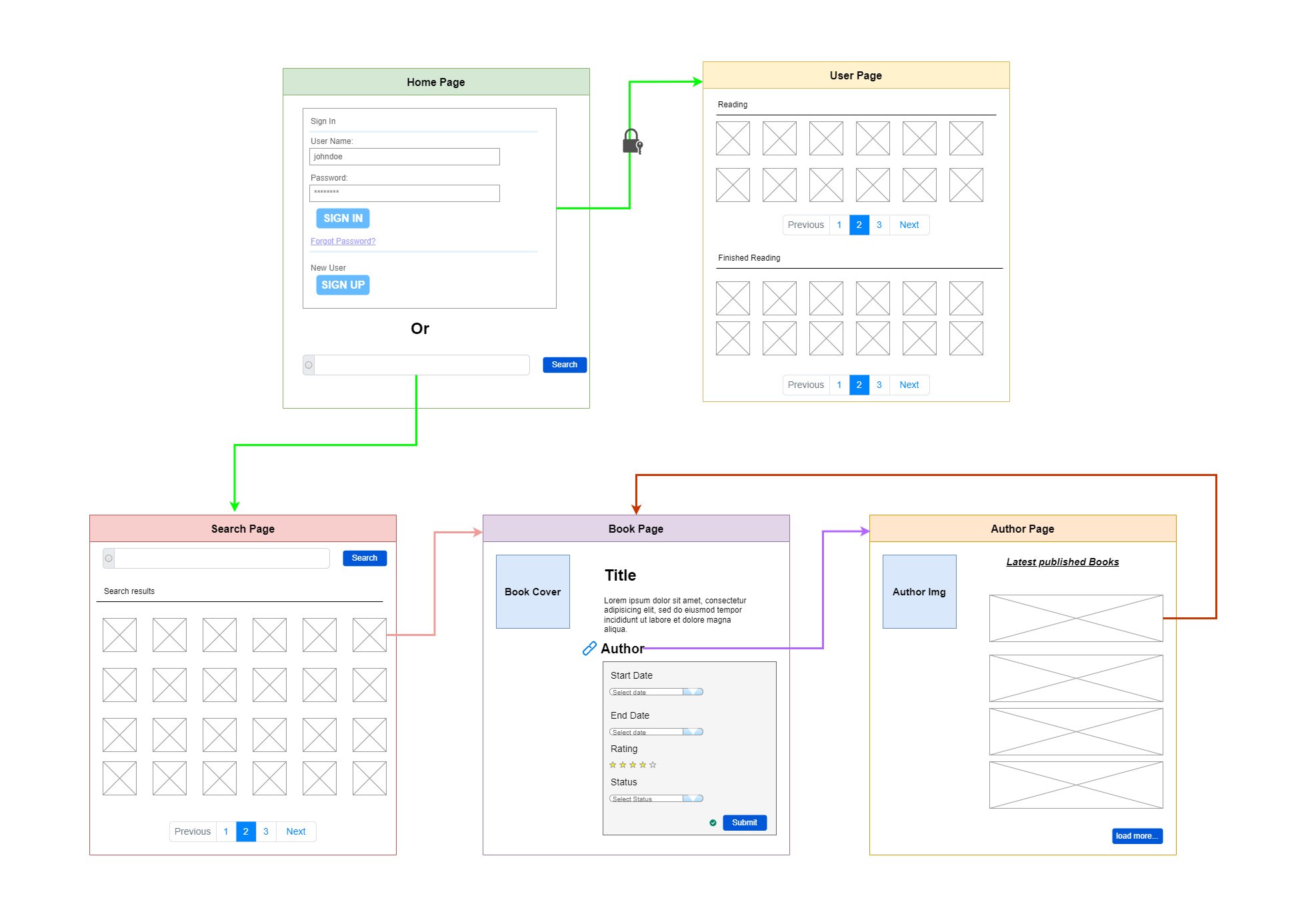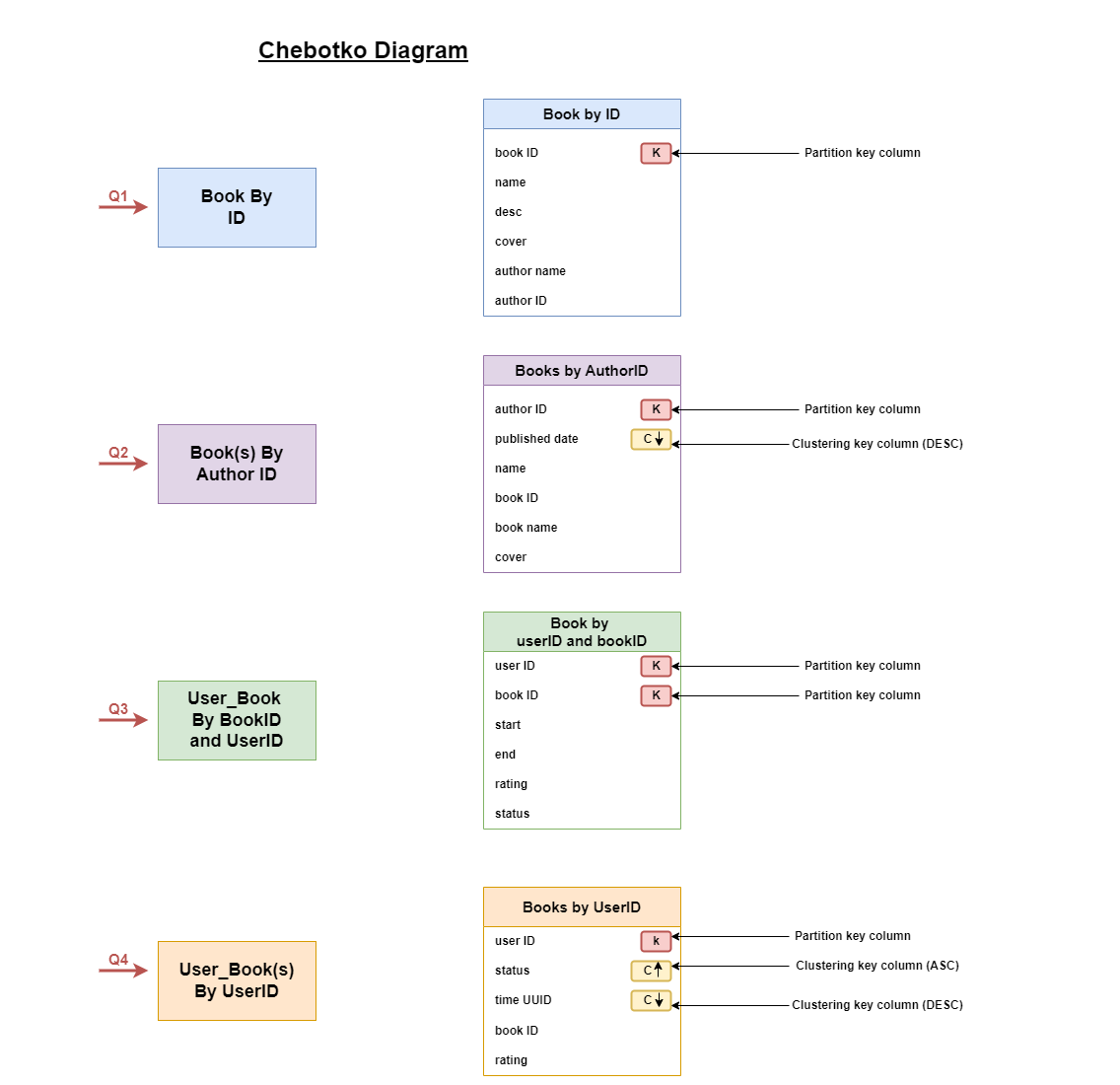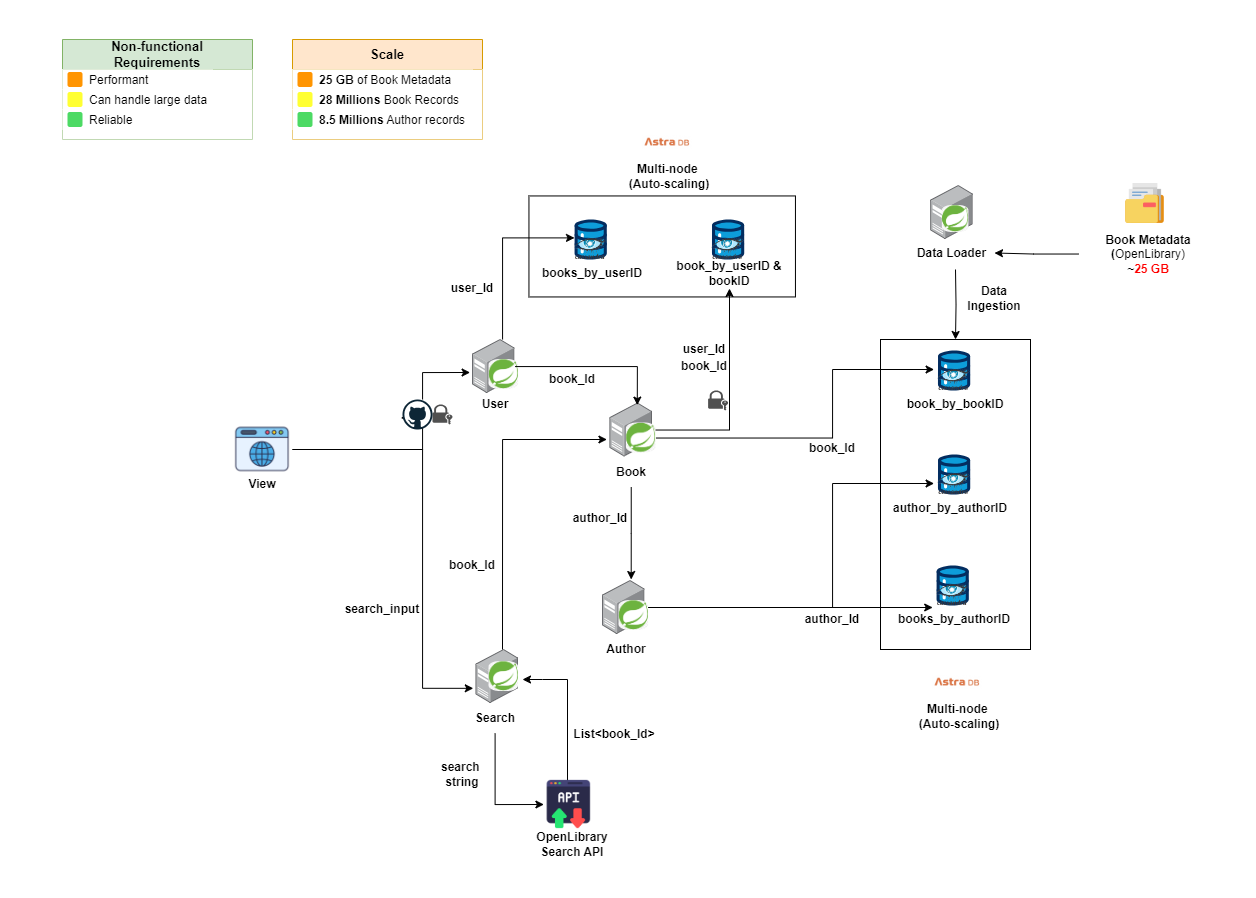Better Reads is a full-stack application inspired by GoodReads, built with a focus on scalability and high performance. The primary objective is to create an application that can handle and serve a vast catalog of every book ever published in the world, allowing users to browse, track their reading progress, and rate books efficiently, even with 28+ millions of book records.
- Comprehensive Book Catalog: Store and serve information on every book ever published globally.
- Book Tracking: Users can mark books as read, currently reading, and rate them on a 5-star scale.
- Reading Progress Tracking: Users can track their reading progress and view their recently-read books.
- Highly Scalable Architecture: Designed to handle large amounts of data and scale seamlessly with increasing user load.
- High Performance: Optimized for fast page loads and efficient data retrieval, ensuring a smooth user experience.
- Backend: Spring Boot
- Database: Apache Cassandra (using DataStax Astra DB, a hosted Cassandra service)
- Security: Spring Security with GitHub OAuth login
- View Rendering: Thymeleaf
- Data Access: Spring Data Cassandra (repository pattern)
- NoSQL Database (Apache Cassandra): Chosen for its ability to handle large amounts of data efficiently and scale horizontally.
- Hosted Cassandra Service (DataStax Astra DB): Provides a managed Cassandra instance, eliminating the need for local installation and scaling based on load.
- GitHub OAuth Integration: Secure user authentication and authorization using GitHub OAuth.
The application offers a user-friendly experience for browsing and tracking books. Here's a quick overview of the key functionalities:
Pages:
- Book: View book details (cover, title, description). Logged-in users can mark books as "Read," "Currently Reading," or "Not Read." Optionally, a rating system can be implemented.
- Author: Lists all books written by a particular author in reverse chronological order (newest first). Accessible by clicking the author's name on the Book page.
- Search: Enables searching for books by title.
- Login: Uses OAuth (Github, Facebook) for user authentication (not required for basic search).
- Home (Logged Out): Provides search functionality.
- Home (Logged In): "My Books" section displays the user's recently read books (up to 50) in reverse chronological order, with the currently reading book at the top.
User Flows:
- Users can browse the app without logging in (search for books).
- Logged-in users can track their reading progress by marking books.
- Clicking on an author's name leads to the Author Page showcasing all their books.
Data Modeling and Query-Driven Design
The Cassandra data model is optimized for the application's most frequent queries, ensuring efficient data retrieval.
Data Ingestion
A separate Spring Boot service ingests book metadata from the Open Library data dump into the Cassandra database.
Scalability and Reliability
- The stateless application tier scales horizontally for high availability.
- The Cassandra cluster offers built-in replication and fault tolerance for data durability.
This architecture lays the foundation for a high-performing, scalable, and reliable application to manage a vast book collection.
Cassandra vs Relational Databases:
- Data Distribution: Cassandra distributes data across nodes based on a partition key. Relational databases typically store all data in a single location.
- Schema Design: Cassandra tables are designed for specific queries, often denormalizing data to avoid joins at read time. Relational databases focus on data integrity and normalization.
Key Concepts in Cassandra
- Partition Key: A column or set of columns that determines which node stores a piece of data.
- Clustering Key: An optional column or set of columns that defines the order of rows within a partition.
-
Requirements
- Store book information (title, author, publication date, etc.)
- Efficiently retrieve books by author ID, sorted by recent publication date.
- Allow users to rate and track the status (currently reading, finished) of books.
- Display a user's recently read books, sorted by status (currently reading first) and then by read time (most recent first).
-
Data Model
We will leverage Cassandra's strengths in data distribution and denormalization to achieve optimal performance for the defined queries.
3.1 Tables
The system will utilize four Cassandra tables:
- Books by ID (Partition Key: book_id):
- Stores detailed information about each book (title, author, publication date, etc.).
- Books by Author ID (Partition Key: author_id, Clustering Key: publish_date descending):
- Stores book IDs for each author.
- Uses author_id as the partition key to efficiently retrieve all books by an author.
- Uses publish_date as a clustering key in descending order to display books with the most recent publication date first.
- User Book by Book ID and User ID (Partition: book_id, user_id):
- Stores user-specific data for a book (rating, status - currently reading/finished).
- Uses book_id and user_id as the composite primary key for quick access to user information for a particular book.
- User Books by User ID (Partition Key: user_id, Clustering Key: time_uuid descending, status ascending):
- Stores all book IDs read by a user.
- Uses user_id as the partition key to efficiently retrieve all books read by a user.
- Uses a combination of clustering keys:
- time_uuid (in descending order) for recent reads.
- status (ascending order) to prioritize "currently reading" books even if they were started before finished books.
3.2 Denormalization
We intentionally duplicate some data (author information in Books by Author ID table) to avoid joins during read operations and improve performance.
- Books by ID (Partition Key: book_id):
-
Partitioning Strategy
- Books by ID: Partitioned by book_id to ensure each book has a single location for efficient retrieval.
- Books by Author ID: Partitioned by author_id to group all books by an author for efficient retrieval. Potential for large partitions if an author has many books, but considered acceptable based on the assumption of a limited number of books per author.
- User Book by Book ID and User ID: Partitioned by both book_id and user_id for quick access to user-specific information for a book.
- User Books by User ID: Partitioned by user_id to efficiently retrieve all books read by a user. We acknowledge the possibility of large partitions for users with extensive reading history. We will monitor partition size and implement solutions like year-based sub-partitions if necessary.
-
Trade-offs
The chosen schema design prioritizes read performance for the specified queries by denormalizing data and leveraging Cassandra's partitioning capabilities. This approach comes at the expense of some data duplication.
The Better Reads application leverages a robust and scalable system architecture to efficiently handle book data and user interactions. Here's a technical overview:
Architecture
1. Presentation Tier:
- Spring Boot web application with Spring MVC for efficient request handling and routing.
- Thymeleaf templating engine for dynamic and user-friendly interfaces.
- Focus: User interactions, view rendering, and data presentation.
2. Application Tier:
- Stateless Spring Boot application with Spring Security for robust authentication and authorization.
- Handles business logic, coordinates data flow between presentation and data tiers.
3. Data Tier:
- Apache Cassandra database cluster (NoSQL) for horizontally scalable and fault-tolerant data storage.
- DataStax Astra DB: Managed Cassandra service ensures automatic scaling and simplifies maintenance.
- Spring Data Cassandra: Streamlines data interaction with the Cassandra database using a repository pattern.
Key Design Decisions for Scalability and Performance:
- NoSQL Database (Cassandra): Efficiently handles massive datasets (28+ millions of books) and scales horizontally to accommodate increasing user load.
- Data Modeling and Partitioning: Optimized Cassandra schema design minimizes read operations and data retrieval times.
- Stateless Application Tier: Enables horizontal scaling by allowing stateless application servers to be easily added or removed based on traffic demands.
This system design ensures Better Reads can effectively manage a vast book catalog, deliver fast page loads, and maintain a smooth user experience even with a large and growing user base.




